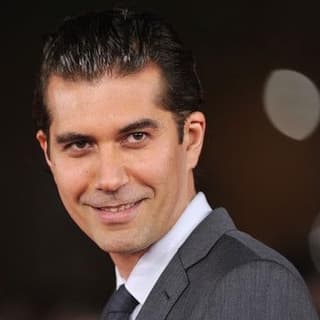
Many see artificial intelligence as a productivity hack to improve workflow efficiency. But that’s only half the story. In fact, most of the most interesting breakthroughs in creative technology come from playful experimentation and happy accidents—the moments an artist pushes a tool beyond its prescribed limits.
For Reza Sixo Safai, a Sundance & Cannes Award-Winning filmmaker, actor, and writer, the real potential of these tools lies in that same tradition of creative misuse. Growing up in Palo Alto with a father who was an inventor at Hewlett-Packard Labs, Safai was instilled with a "deep sense of curiosity" to investigate technology for himself. His journey into AI began when a green-lit film project vanished amid industry strikes.
Pretty quickly, Safai's experiments put him at the forefront of the field, where he created one of the first AI-driven films to premiere at a major festival. Now the co-founder of MASSIVE STUDIOS, Safai champions the idea that real innovation happens when you liberate technology from its intended purpose.
"Kids are the best scientists in the world because that's how they learn about the world. So, combat the noise with that childlike enthusiasm and wonder and curiosity, and just play with it," Safai says. In his experience, key breakthroughs are more likely to emerge from a spirit of pure, uninhibited experimentation.
-
Accidental anthem: For Safai, this model of creative misuse is a core part of his philosophy. Identifying a direct parallel in music history, he explains how almost every new wave in music comes from artists feeding technology weird inputs. "When the 808 came out, it was supposed to be an accompaniment. And then creatives in Detroit got hold of it, and techno was born. It's incredible. I love putting technology in the hands of creators."
 Yes, you can get an output from a simple prompt, but to get something of real quality that matches a director's vision requires a lot of finesse, a lot of work, and a lot of time.Reza Sixo Safai - Filmmaker & Co-Founder | MASSIVE STUDIOS
Yes, you can get an output from a simple prompt, but to get something of real quality that matches a director's vision requires a lot of finesse, a lot of work, and a lot of time.Reza Sixo Safai - Filmmaker & Co-Founder | MASSIVE STUDIOSA perfect example of his philosophy comes from a moment of idle curiosity in a Taiwanese airport lounge. While looking at a display on the history of cinema, he wondered what would happen if he fed static storyboards into a video-generation model like Sora. Later, Safai tested the idea with storyboards from an old Alfred Hitchcock film. Without mentioning the movie in the prompt, the tool interpreted the images and animated them into coherent cinematic shots.
-
A Sora surprise: As proof that some of the most exciting results emerge when artists push the tools in unexpected ways, Safai posted the results on X. "I don't think the programmers of Sora even knew that it could do that. That was just from playing around and seeing what it's capable of. That's why I always think the creatives are always necessary. We just think differently than others and really push the boundaries."
However, the paradigm of artistic play also has significant commercial implications, Safai continues. Before AI, pitching an ambitious film involved creating a "rip-o-matic," a collage of scenes pulled from other movies. Now, he uses AI to develop high-fidelity teasers that show studios exactly what an original film could look like, a method that can attract serious attention.
But the process is far from "push-button magic," as Safai says. "Yes, you can get an output from a simple prompt, but to get something of real quality that matches a director's vision requires a lot of finesse, a lot of work, and a lot of time." Ultimately, emotional authenticity often comes from the "many humans involved in adding to the mix," he concludes. What that collaborative model will actually look like is yet to be seen, but it doesn't stop Safai from dreaming. "What if you work together with the same departments and they all have access to these tools? At that point, it could become a really interesting collaboration, which we're not really seeing yet."
